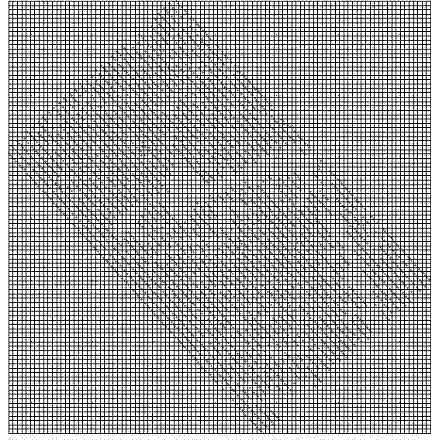Computer discrete data gridding parameter extracting method and operating step thereof
A discrete data and parameter extraction technology, applied in the direction of calculation, electrical digital data processing, special data processing applications, etc., can solve the problems of original data information distortion, inconvenient use, large data volume distortion, etc., to reduce data information distortion, Save valuable time and improve efficiency
- Summary
- Abstract
- Description
- Claims
- Application Information
AI Technical Summary
Problems solved by technology
Method used
Image
Examples
Embodiment 1
[0116] Example 1 Types of Discrete Data
[0117] According to the distribution characteristics of discrete data, discrete data can be divided into three types: linear distribution discrete data, random distribution discrete data and mixed distribution discrete data:
[0118] (1) Linearly distributed discrete data:
[0119] Including grid distribution, discrete data with obvious linear distribution;
[0120] Grid distribution discrete data refers to evenly spaced grid distribution data, that is, the intervals between adjacent data in the X and Y directions are uniform and equal. Such as Figure 6 shown.
[0121] Obvious linear distribution The distribution characteristics of discrete data are: when viewed in at least one direction, it presents a slightly curved, approximately straight-line shape. Note two points:
[0122] One is that when viewed from the X and Y directions, the discrete data presents a slightly curved, approximately straight-line shape, or it can have su...
Embodiment 2
[0132] Example 2 Extraction Method of Optimal Grid Parameters for Discrete Data with Linear Distribution
[0133] For discrete data with a linear distribution, its distribution characteristics are the most obvious, that is, it has obvious periodicity.
[0134] 1. Extraction of grid spacing:
[0135] For discrete data with a linear distribution, such as Figure 6 , 7 As shown, its distribution characteristics are periodic, and the most obvious period is the distance between adjacent data lines, which is called the main period of the discrete data distribution (its reciprocal is called the main frequency).
[0136] The grid spacing of linearly distributed discrete data is the main cycle of data distribution.
[0137] Figure 10 Gridding spacing algorithm for extracting linearly distributed discrete data:
[0138] In the X and Y directions respectively:
[0139] First, the discrete data is subjected to projection statistics at equal intervals to obtain a projection s...
Embodiment 3
[0168] Example 3 Optimal Grid Parameter Extraction Method for Randomly Distributed Discrete Data
[0169] right Figure 8 The random distribution of discrete data shown in the projection statistics at different intervals, and Fourier transform to obtain the spectrum, such as Figure 18 shown. It can be found that in the frequency spectrum, except for the zero frequency point, there is no obvious prominent frequency point, and the amplitudes are not much different, and except for the zero frequency point, the frequency point with the largest amplitude is different (this is the difference from the linear distribution discrete different data). In fact, this is in line with the characteristics of random distribution, that is, there is no obvious distribution period.
[0170] Figure 18 Projection statistics and spectrum analysis:
[0171] Therefore, the method using projection statistics combined with Fourier spectrum analysis cannot guarantee a reasonable grid spacing ...
PUM
 Login to View More
Login to View More Abstract
Description
Claims
Application Information
 Login to View More
Login to View More - Generate Ideas
- Intellectual Property
- Life Sciences
- Materials
- Tech Scout
- Unparalleled Data Quality
- Higher Quality Content
- 60% Fewer Hallucinations
Browse by: Latest US Patents, China's latest patents, Technical Efficacy Thesaurus, Application Domain, Technology Topic, Popular Technical Reports.
© 2025 PatSnap. All rights reserved.Legal|Privacy policy|Modern Slavery Act Transparency Statement|Sitemap|About US| Contact US: help@patsnap.com



